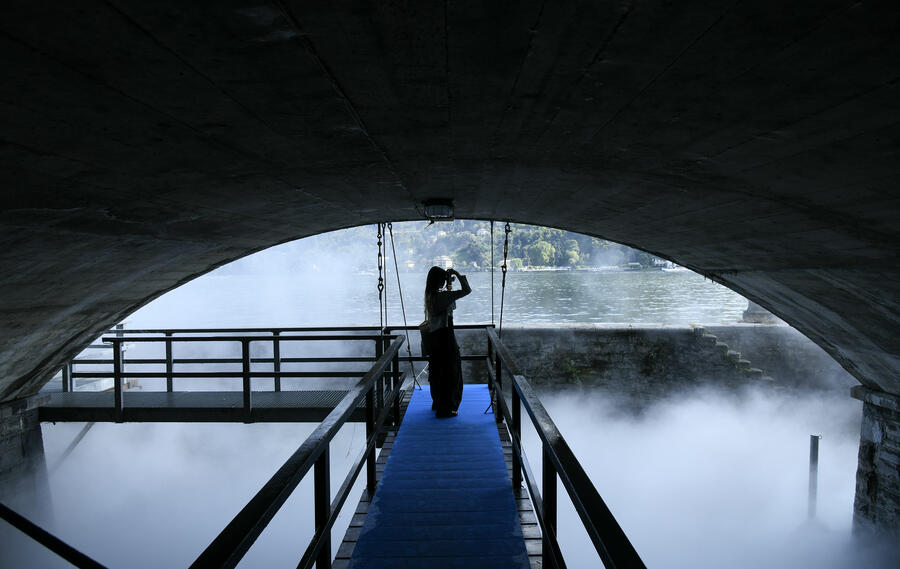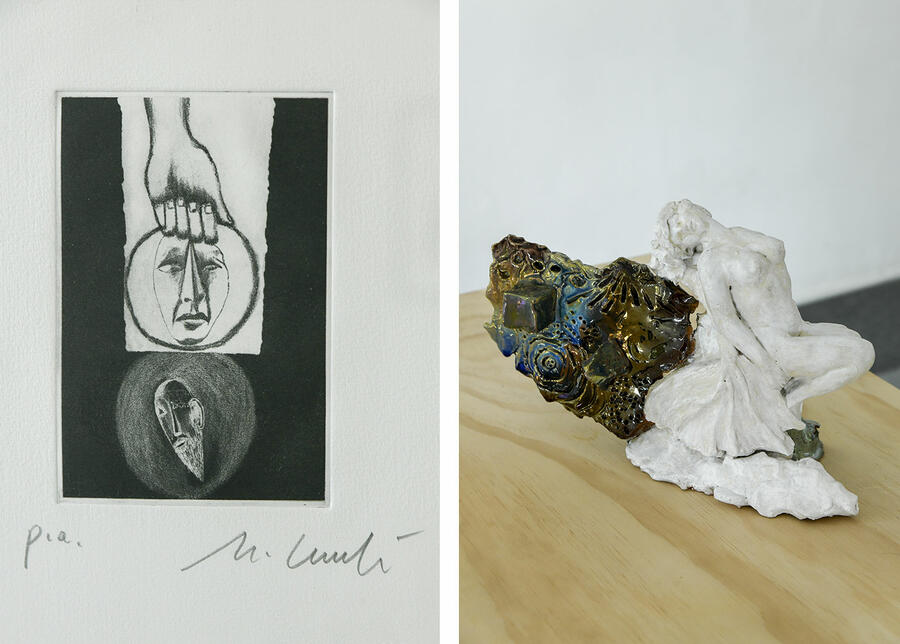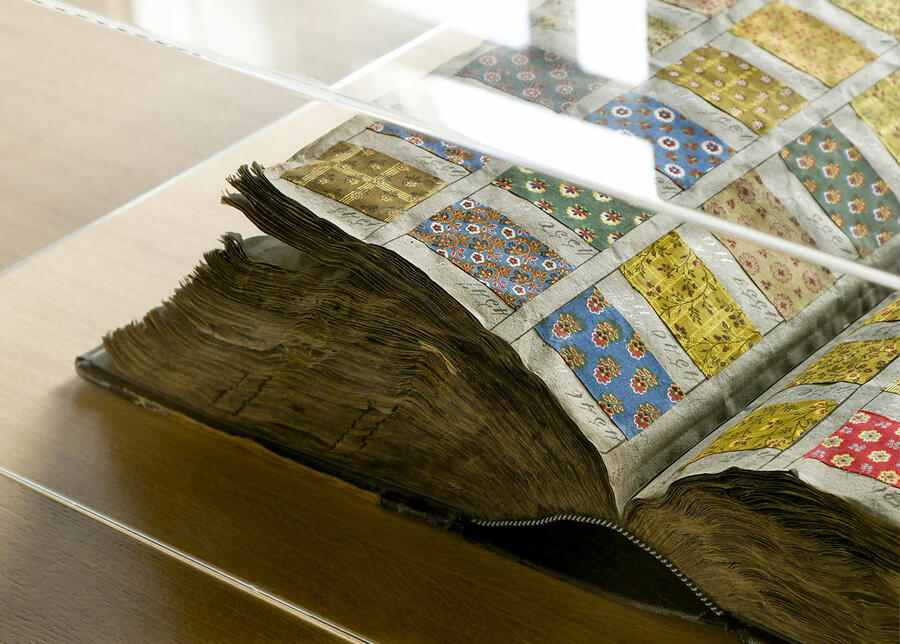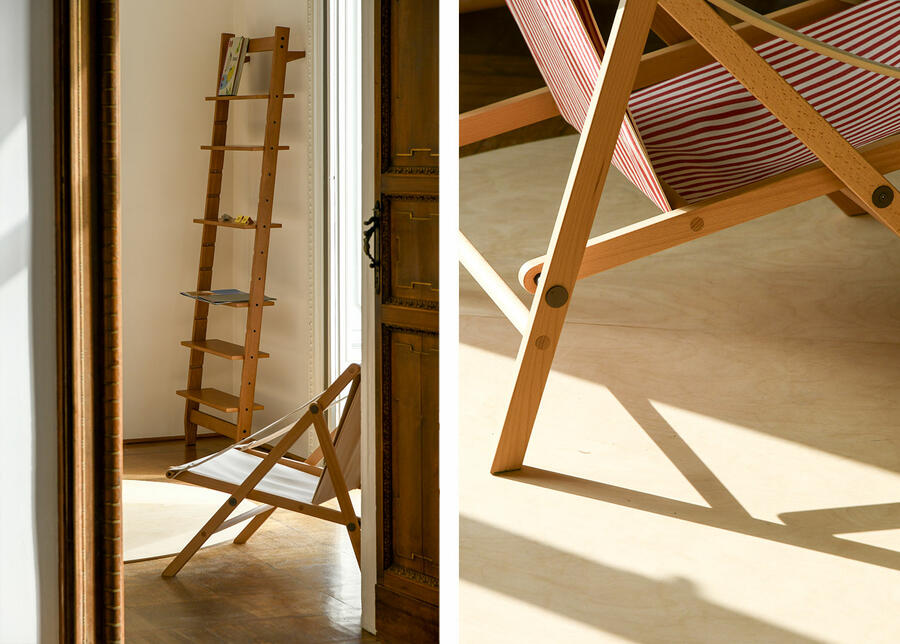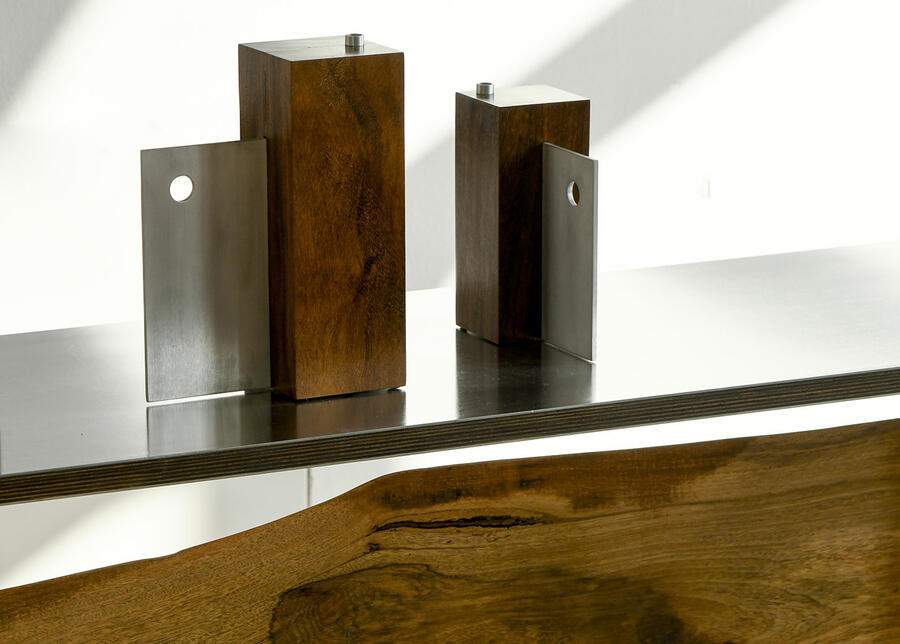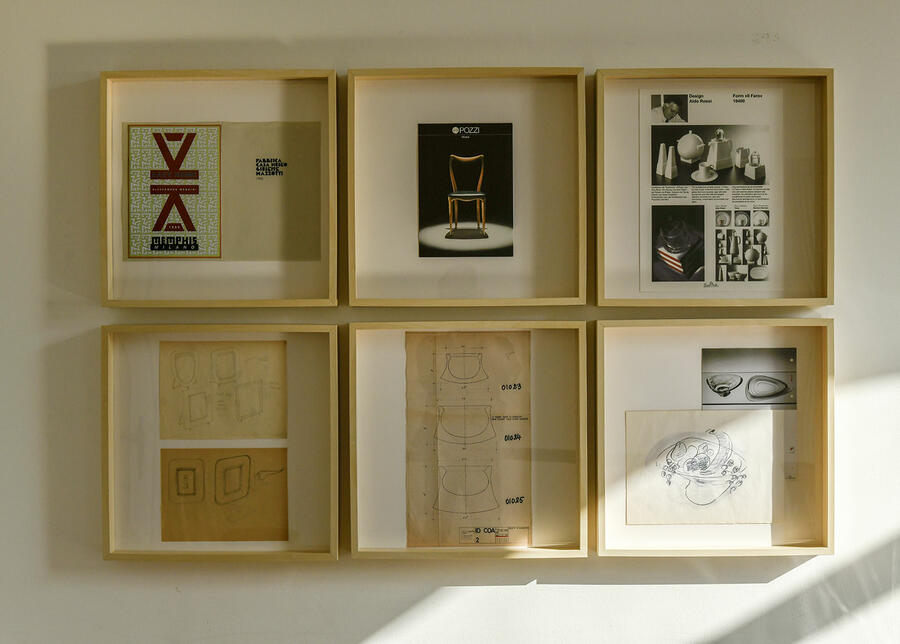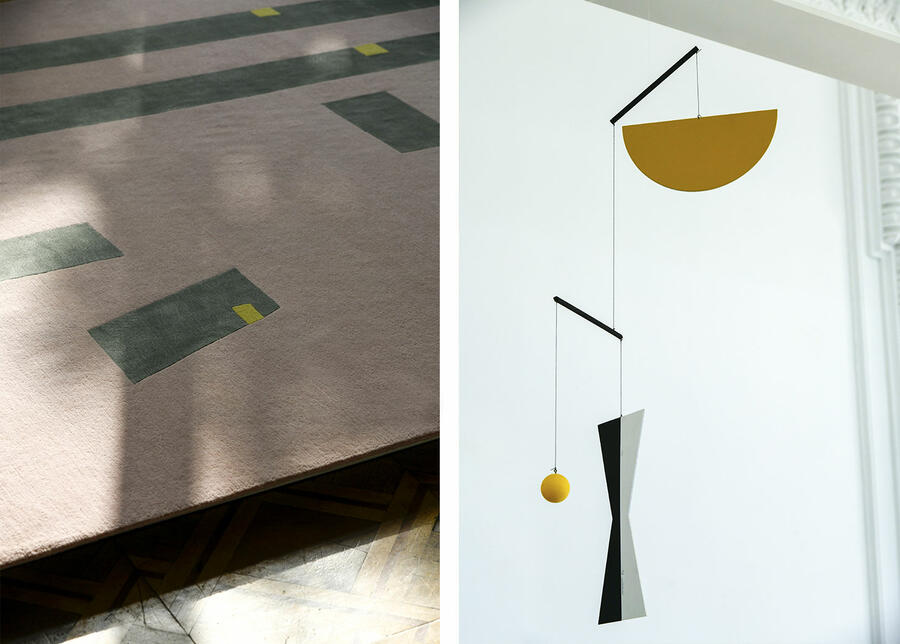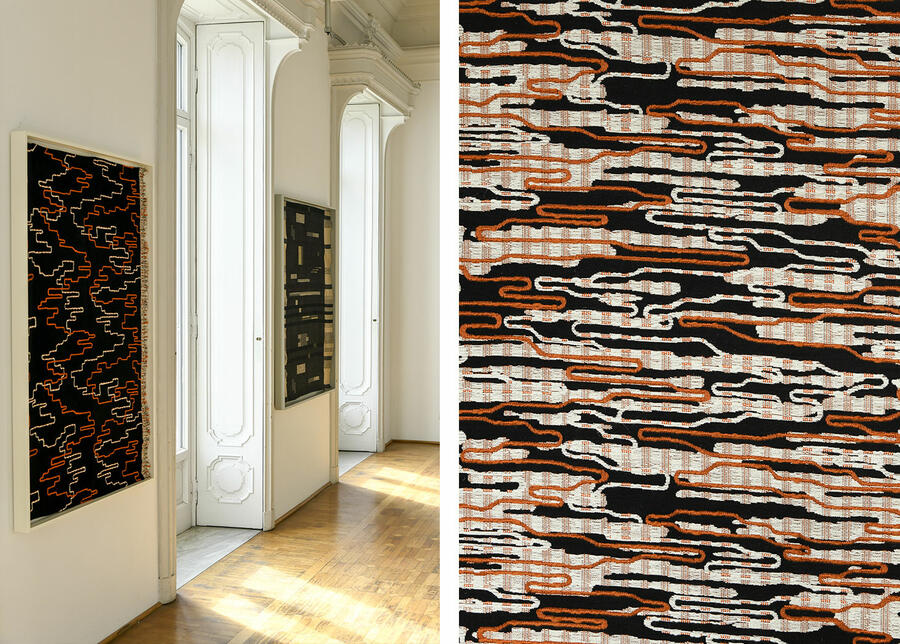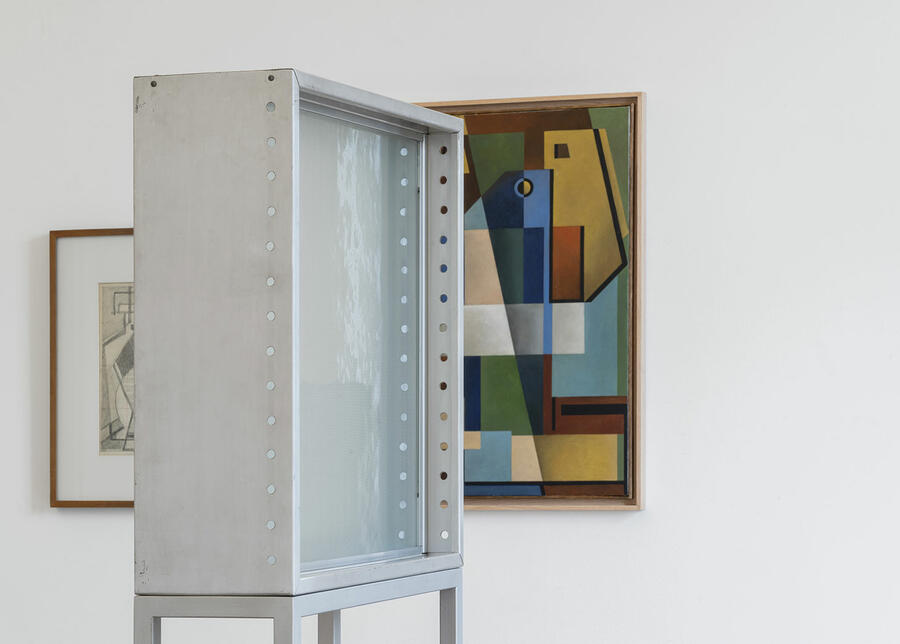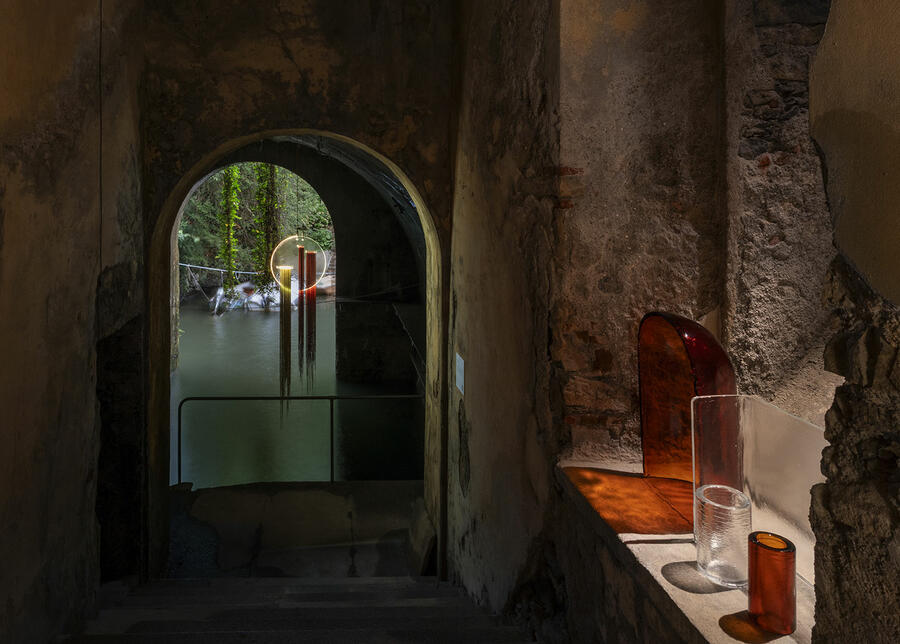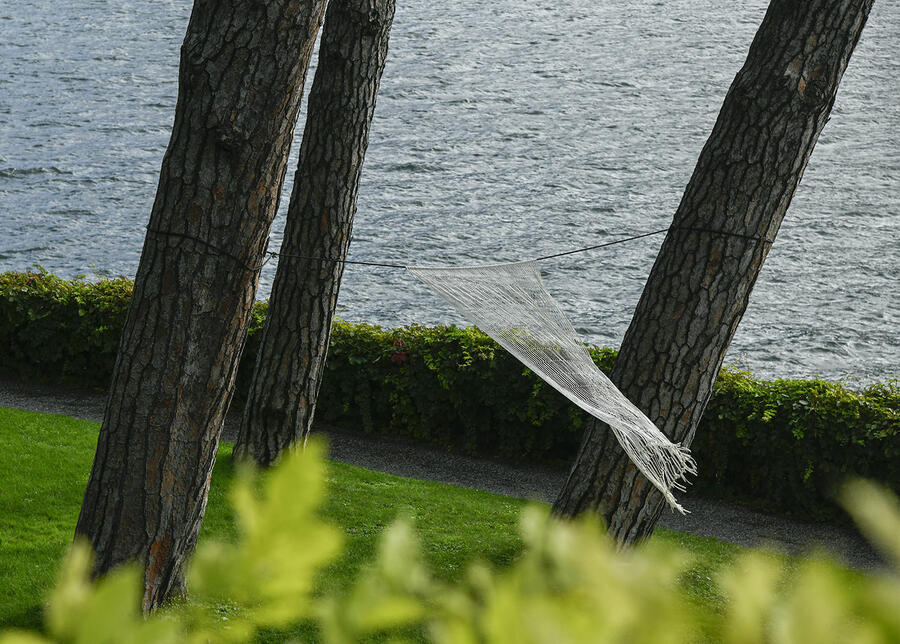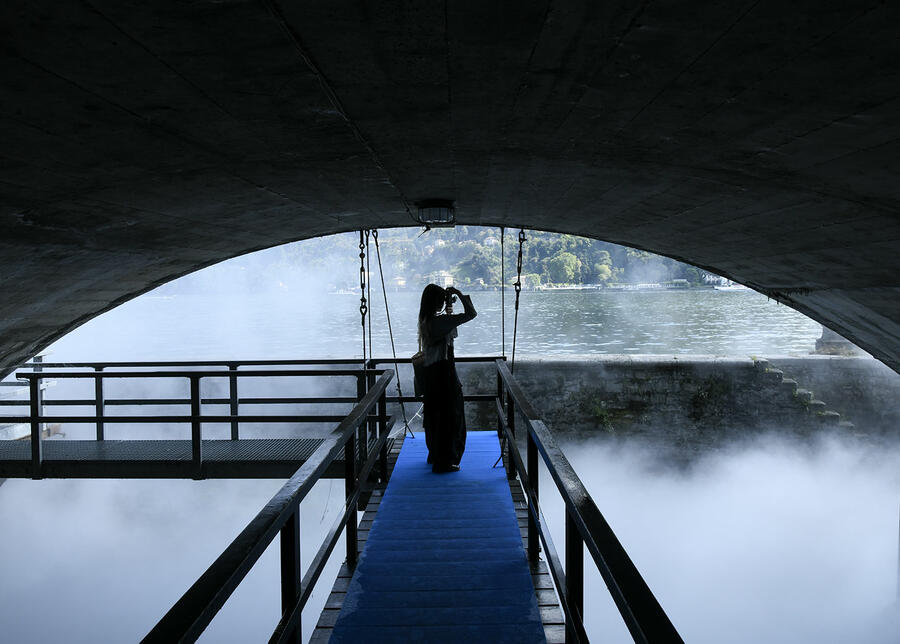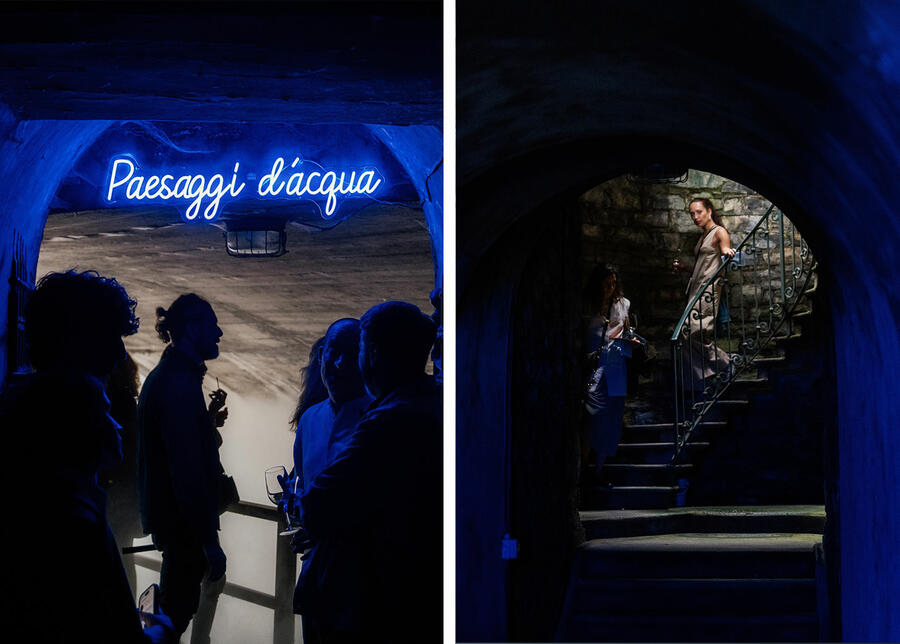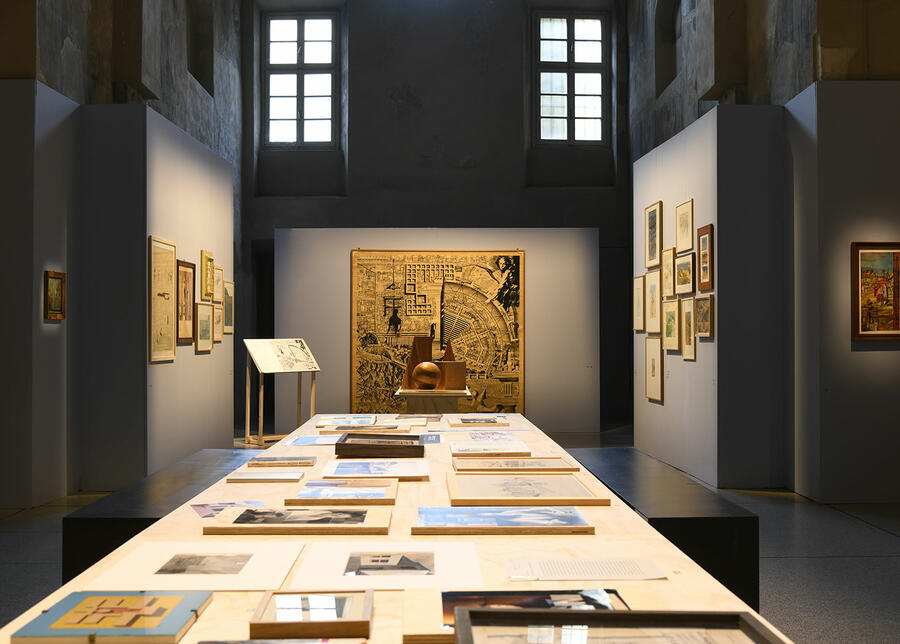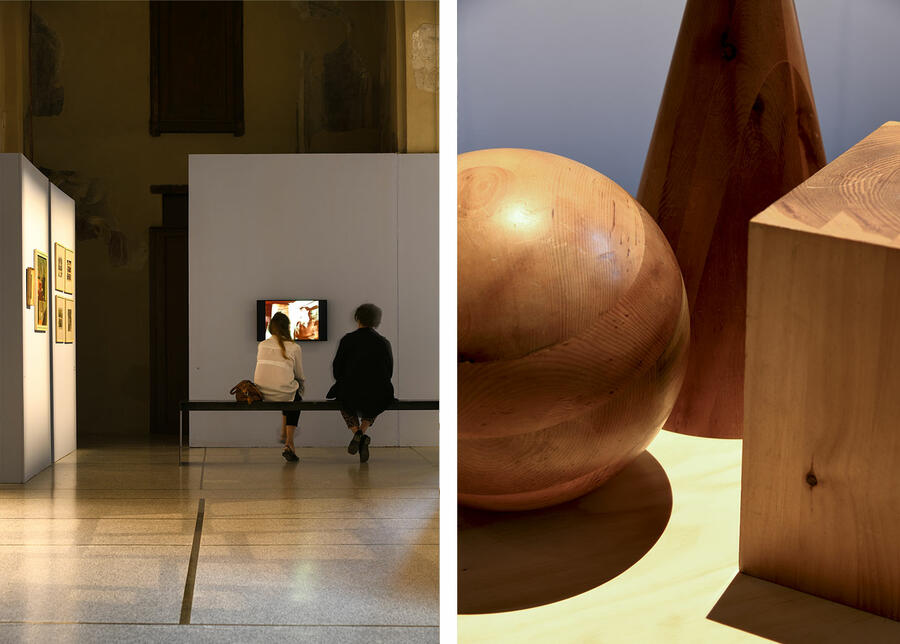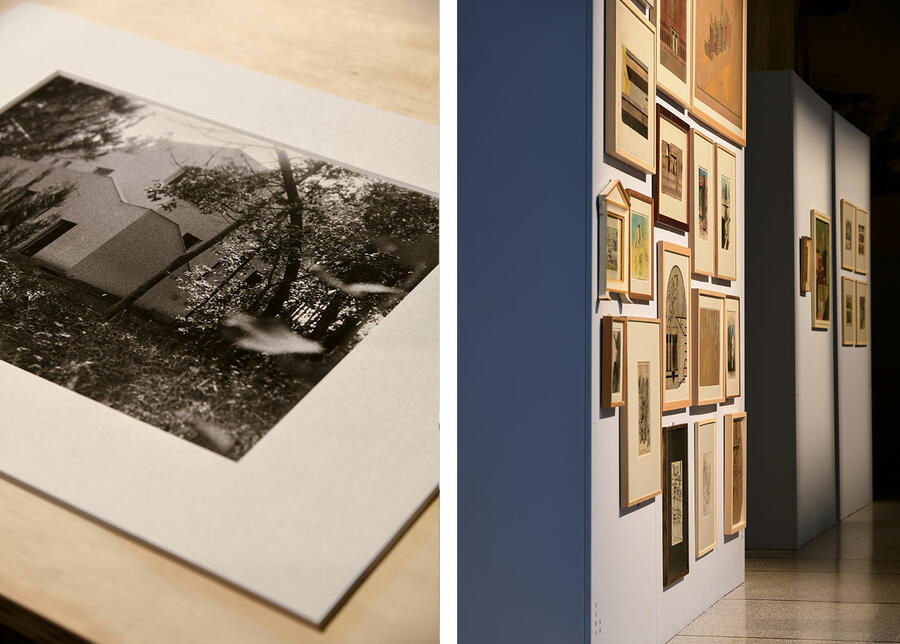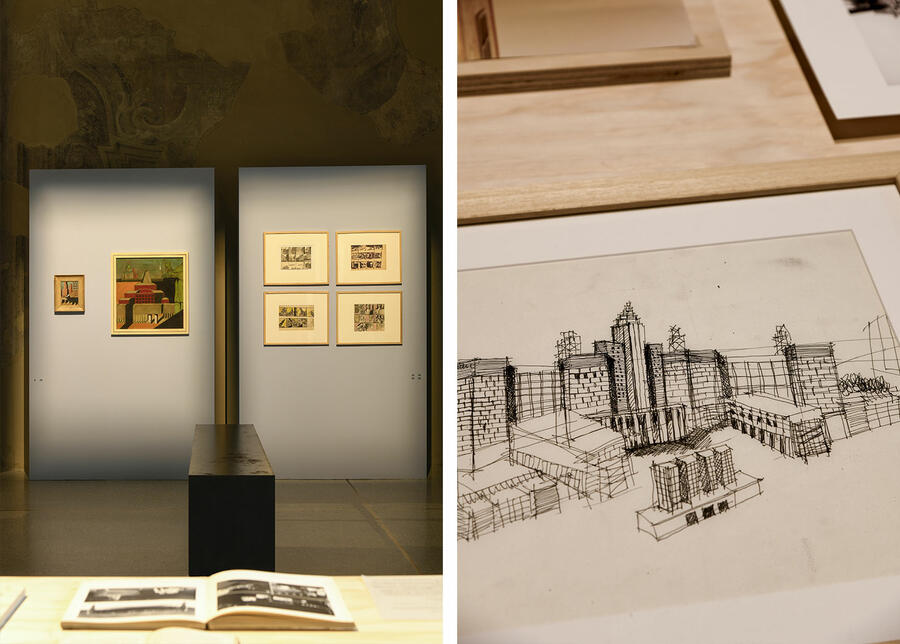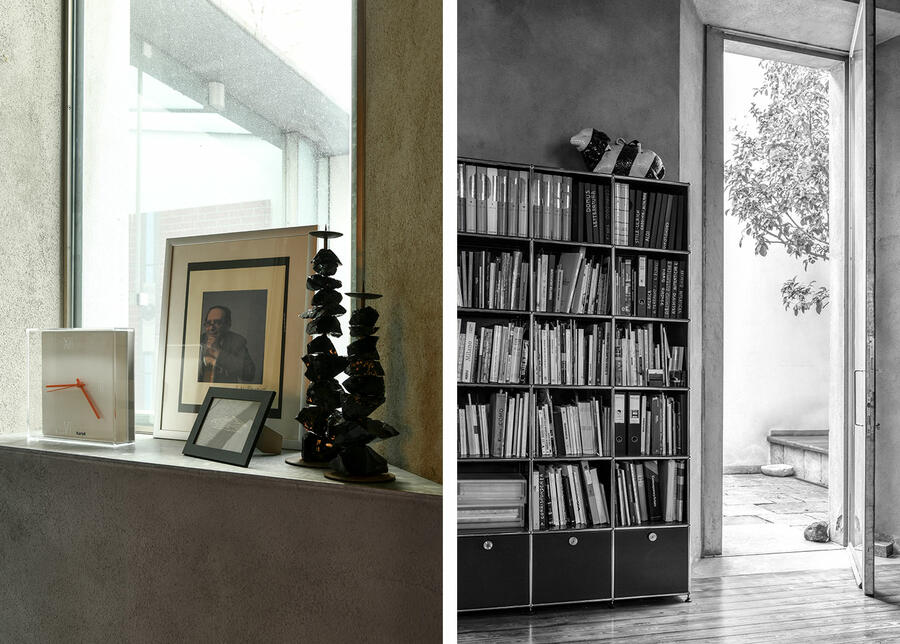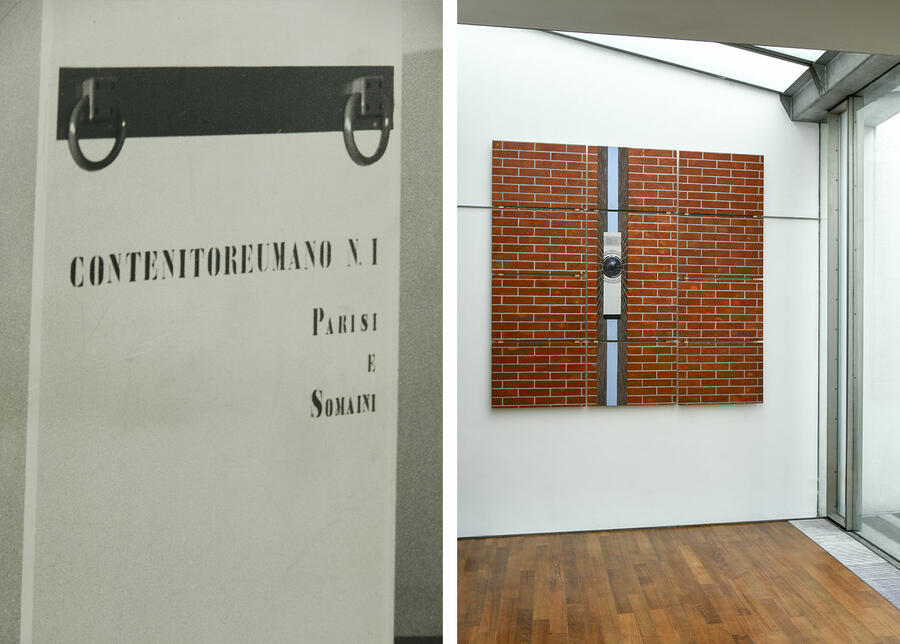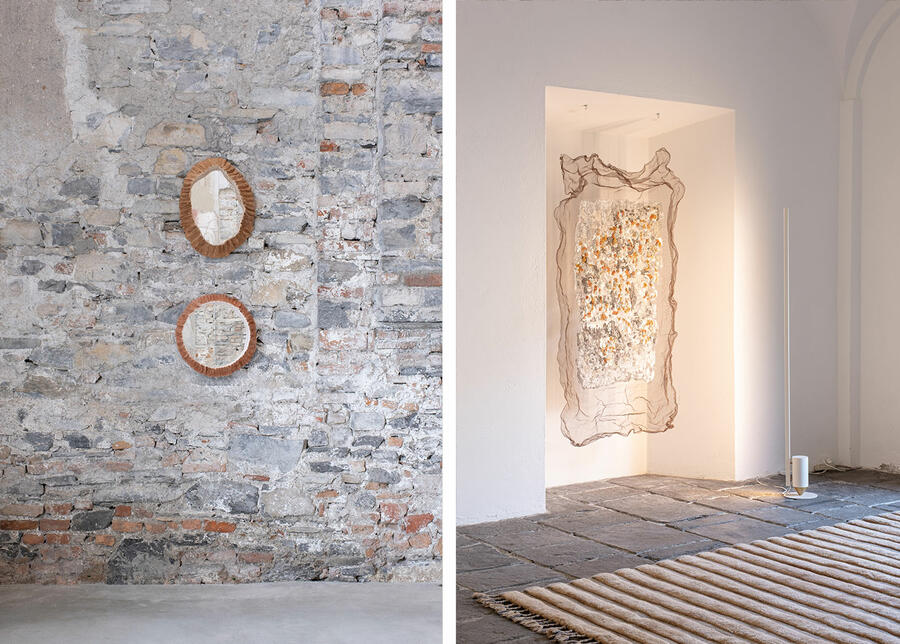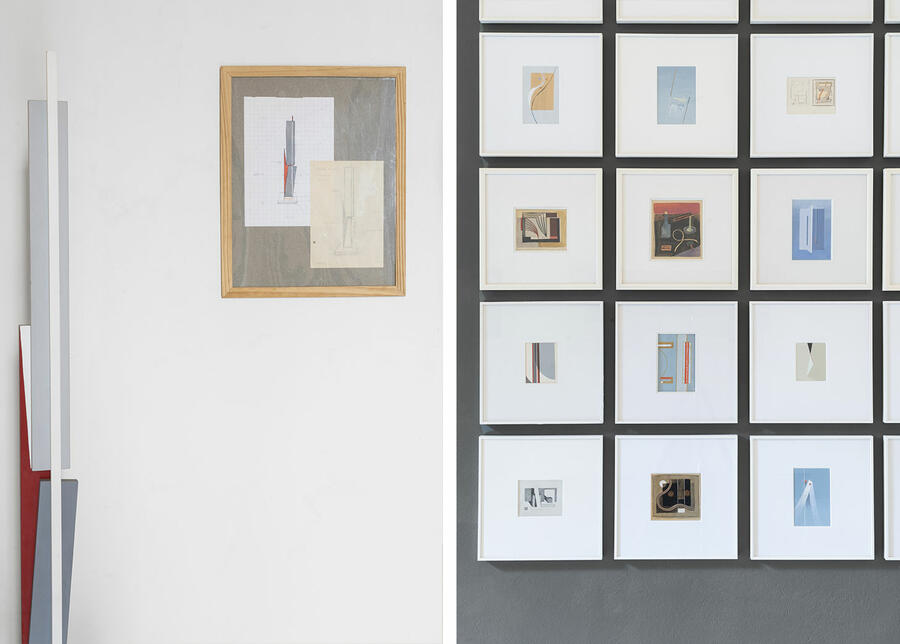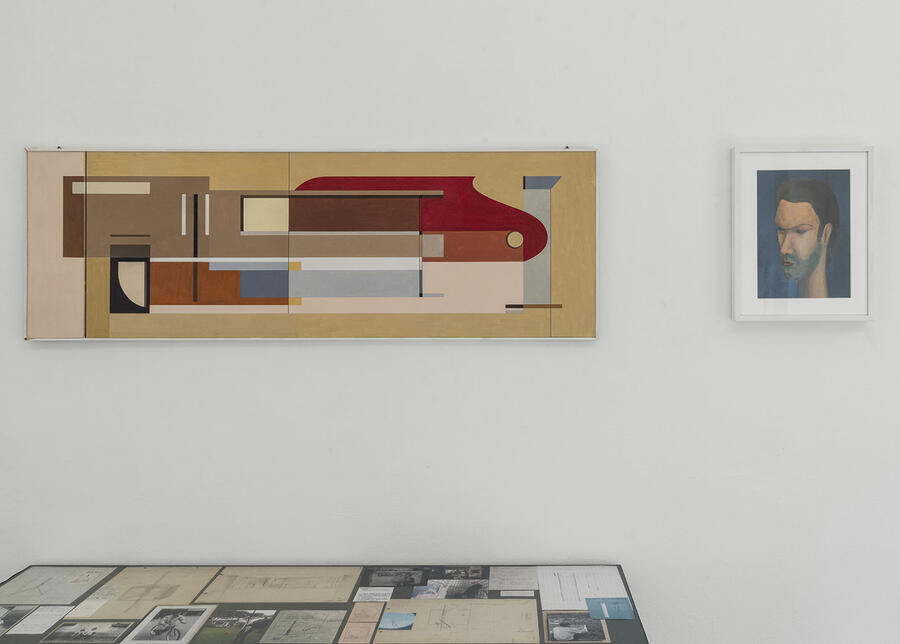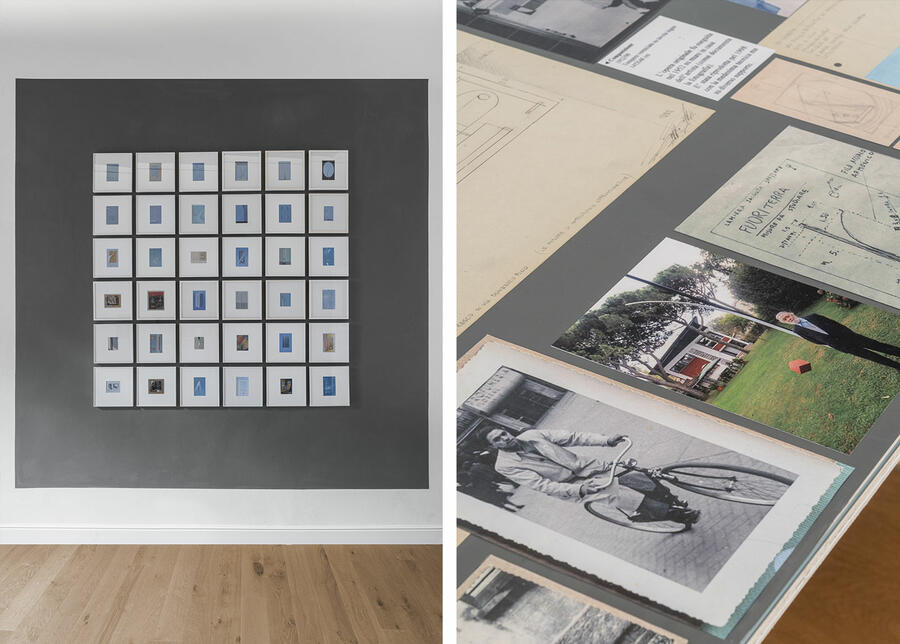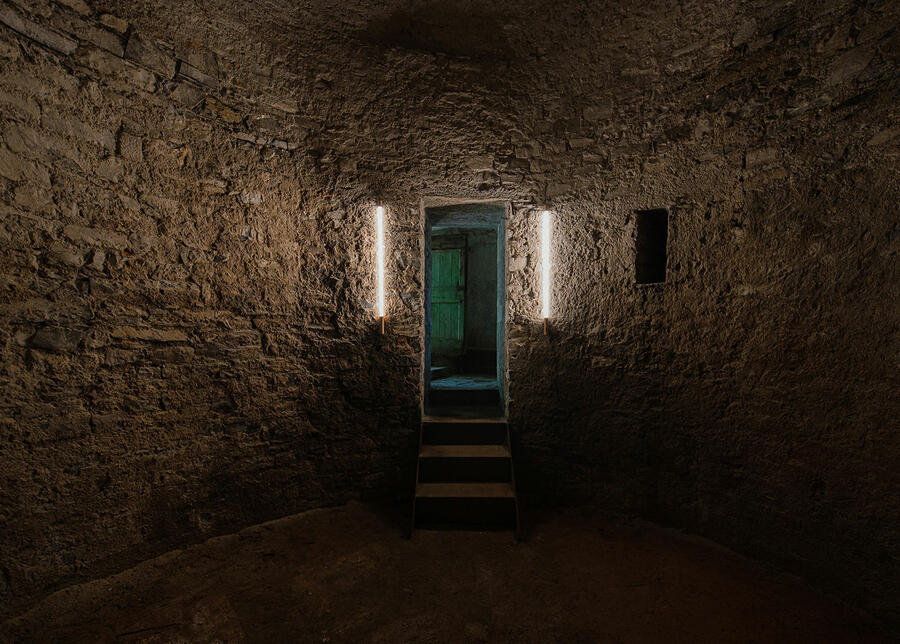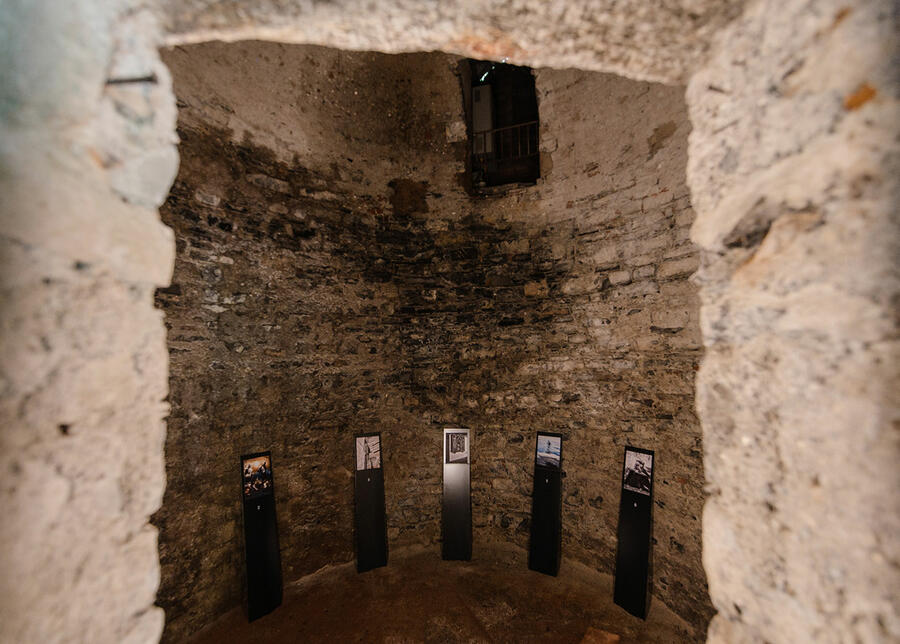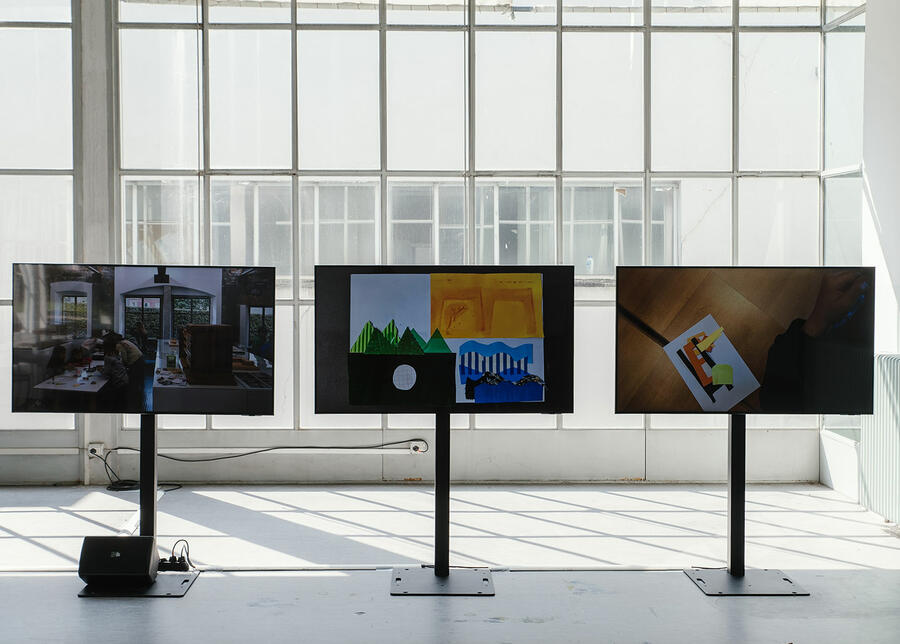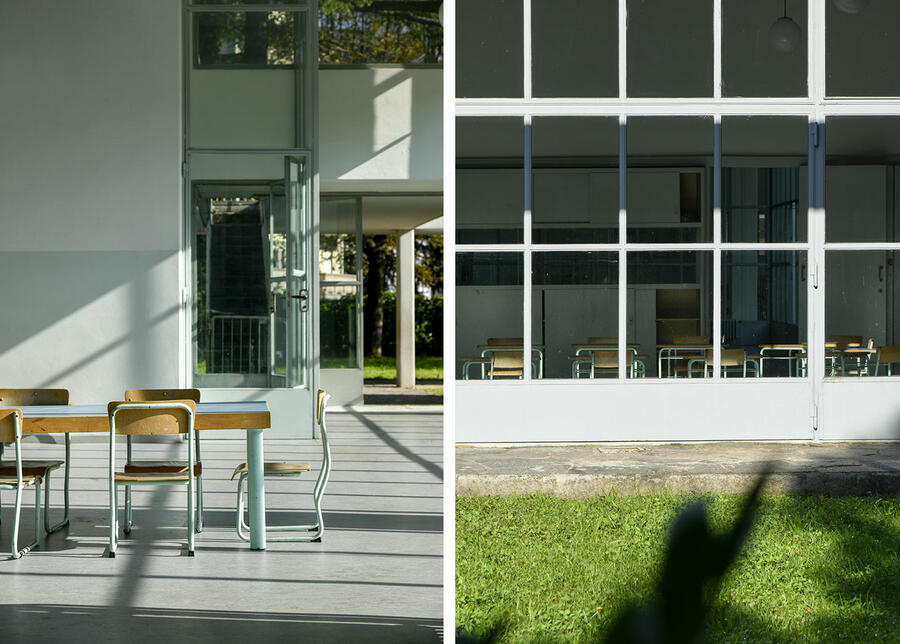The seventh edition of the Lake Como Design Festival renewed its program of exhibitions and special events in Como and around the lake. The theme of this year’s edition was Fragments: fragmentation understood as an opportunity for rebirth — whether natural or intentional; fragmentation as a regenerative act, embraced as a chance for reconstruction and reconnection, remembrance and rediscovery.

Fragments of Memory
The theme of fragmentation as a recovery of memory was explored through an exhibition set within the spaces of Villa del Grumello, part of the Chilometro della Conoscenza park. Entitled Fragments of Memory, the show offered an ideal survey of archives and special projects involving the heritage of major figures in Italian design and historic brands. The exhibition opened with a core selection of works by Enzo Cucchi. At the center of the room, sculptures presented by Galleria ZERO... —reinterpretations of Rome’s fountains transformed into fragments of an imaginary city emerging as an inner vision—dialogued with a series of wall works created in collaboration with Edizioni Lithos. The Mantero Archive, an international reference point for textile culture, presented UNANNO, an installation narrating the first year of public activity of the project as a new creative engine. The result was a reflection on time and memory as design materials, constantly undergoing regeneration.
With the Vico Collection, Campeggi presented a selection of transformable objects born from the historic collaboration between Claudio Campeggi and Vico Magistretti — a collection that interprets design as a dynamic and adaptive gesture, an invitation to think of function as a living form. At the heart of the Villa, ETEL dedicated a retrospective to Brazilian designer Claudia Moreira Salles, a representative of a warm, tactile, and sensitive modernism: a journey intertwining formal rigor with a poetic use of natural materials. The narrative continued with Eredi Marelli, which showcased a new selection of iconic Italian design pieces — from Paolo Buffa to Aldo Rossi — the result of ongoing research and rediscovery. Finally, AMINI paid tribute to Bruno Munari with a series of rugs inspired by his famous Macchine Inutili (Useless Machines), translating the master’s visual freedom into textile surfaces that become maps of imagination and invention.
The exhibition also featured a site-specific photographic work by artist Dayanita Singh. Through her Spontaneous Books project, Singh presented Como Box — an unbound book composed of 30 individual images housed within a wooden structure, dedicated to the Rationalist heritage of the city of Como.

On the villa’s first floor, DEDAR presented Weaving Anni Albers, a project created in collaboration with the Josef & Anni Albers Foundation: five jacquard fabrics inspired by the visionary legacy of the German artist, reinterpreted with contemporary sensitivity to transform thread into a living language connecting art, material, and memory. The rooms of Villa del Grumello also hosted a dialogue between Mario Radice and Nanda Vigo, curated by Roberta Lietti. The exhibition was inspired by the friendship and mutual admiration between the two, beautifully expressed in a letter written by Radice to Vigo. Radice’s paintings conversed with Vigo’s Cronotopo — a composition of “diaphragms” made of industrial glass plates — generating fragmented and shifting reflections that changed with the intensity and direction of the light.
In the adjoining room, a selection of works by Alberto Marangoni, who in 1964 co-founded with Barrese, Grassi, and Laminarca the MID Group (Mutamento, Immagine e Dimensione) — one of the most visionary and innovative collectives of the time. A key player in Kinetic and Programmed Art, the group helped redefine the boundaries between art, technology, and participation. The exhibition concluded with WonderGlass, presented at the villa’s dock, featuring a collection of glass works that explored transparency as a metaphor for memory. Fragments of ancient techniques and contemporary visions merged into objects that are both material and narrative. In every project, the fragment emerged as the origin of a new connection — a spark capable of reconnecting eras, stories, and people.
Contemporary Design Selection
In the park of the Chilometro della Conoscenza, the Contemporary Design Selection curated by Giovanna Massoni returned, unfolding along a route that, like a diffused kunsthalle, connected historic villas and lakeside gardens. This year’s Contemporary Design Selection was a collective exploration of the evocative power of the fragment. The 2025 open call invited designers, craftspeople, architects, and artists to investigate three design perspectives: Fragility — the aesthetics of rupture and transformation, the value of the ephemeral and the mutable; The regenerative act — processes of recomposition and recovery, transforming waste and leftovers into new objects imbued with meaning; Memory — conceived as an archive of fragments, a vessel of stories, techniques, and ancient or forgotten cultures.

Coming from across Europe, Africa, the Americas, Asia, and the Middle East, the participants focused on one of these guiding threads—or embraced the poetics of fragmentation in all its complexity. Whether individuals or collectives, young or established, direct witnesses to the inhumanity of war or advocates for urgent social and environmental issues, their design practice was, in every case, an act of resistance.
Abreham (ETH/IT), Adélie Ducasse (FR), Agglomerati (IM) × Sho Ota (JP/NL) x Bianco67 (IT), Anshika Mangla (IND/IT), Atelier Thomas Serruys (BE), Aula (NO), Bas Pattyn (BE), Ben Kicic x Veragouth e Xilema (USA/CH), Eleonora Todde (IT), FlatFlat (USA), Gensuke Kishi (JP/FR), Georg Foster (CH), Giulia Paradell (IT/ES), Grond Studio (BE), Jaipur Rugs (IND), Justyna K Szymanska (PL/UK), Labanto - Francesca Brinatti (IT), LAST Stefano Larotonda (IT/CH), Lucie Gholam (FR-LB), Ludovica Corti (IT), Lyuda Skrynnykova (UA), Marie-Amélie Poisson (FR), Marijke De Cock (BE), Marta Abbott (CZ-US/IT), Materica (IT), Miltgen (LUX/FR), Monostudio (IT), Mooka & Rickie (UK), Næssi (IT), Nuvó Studio (MEX), Omniaworks x Payam Askari (IT/FR-IR/FR), PLASMA-f x Frigerio Marmi e Graniti (IT), Rugsandrugs (UA), Ryoko Nakamura × Triptych (JP/USA), Selma Wallbom (SE), Sierra Kanistanaux (USA), Spinzi (IT), studio högl borowski (AT), Studio Lilium (IT), Studio Zero (IT), Studio Zing (IL), Super Rat (JP), Susanna Costantini - Antonio Barone (IT), Thomas Kurer (CH), Tobie Chevallier (FR), Tokio. (SI), Vacuum Atelier (IT), Verstrepen.studio (BE), We Mediterranean (IT), Yentele (FR), Yunju Jung (KR), ZPSTUDIO (IT).
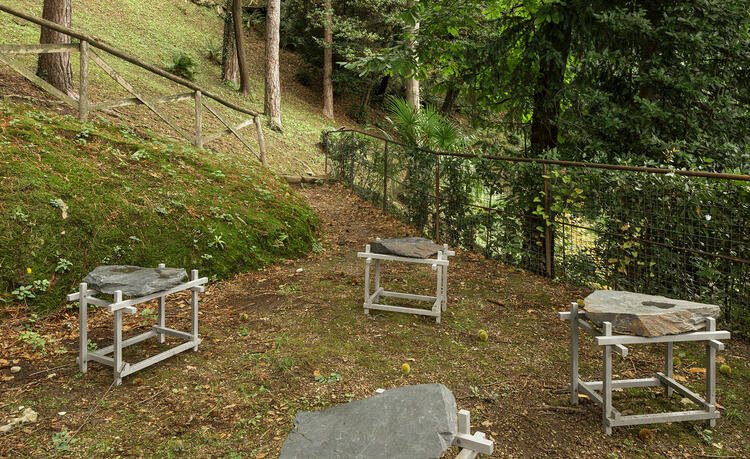
The selection brought together works and research that explored fragmentation not as loss, but as a creative foundation. Each piece became a reflection on time, identity, and the scars—personal, sociopolitical, and environmental—that mark people, materials, and places. Through diverse approaches and practices, the participants revealed how what is broken, forgotten, or marginalized can generate new life and new meaning.
Parola Progetto
The collaboration with Parola Progetto - a podcast of conversations with people who live by their projects, where design in all its forms is narrated exclusively through words - was also renewed. Its creator, journalist Paolo Ferrarini, led a workshop dedicated to the designers featured in the Contemporary Design Selection. Participants worked on defining their own Design Manifesto, a tool to express their ideas, ambitions, and visions for their professional path. Over the course of three sessions, they focused on identity and relationships, materials and research themes, engaging in exercises of writing, listening, and hands-on design. The final outcome was a true and personal manifesto.
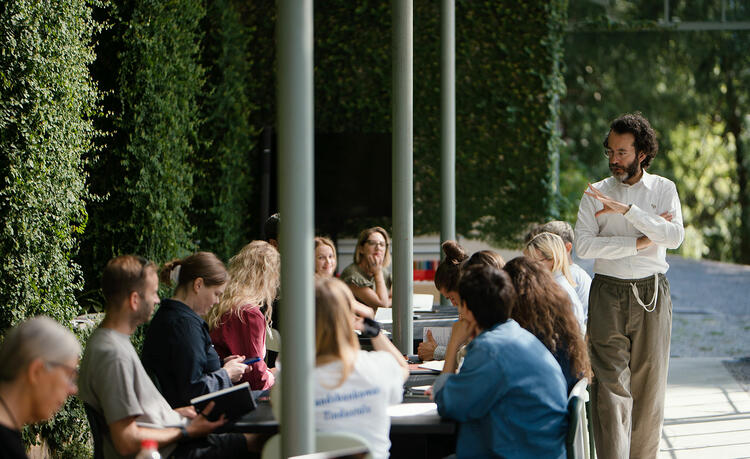
"Voci sull’Acqua". A New Chapter of the "Paesaggi d’Acqua" Research
Voci sull’Acqua (Voices on Water) is a new chapter in the ongoing research project Water Landscapes, first presented during the previous edition of the Lake Como Design Festival. The project focuses on the region of pre-Alpine lakes, both north and south of the Alps, where water acts as the defining element — shaping the area’s identity and ensuring its landscape continuity beyond political boundaries and human-imposed territorial fragmentation. The installation, curated by Stefano Larotonda and Niccolò Nessi, represented an ideal journey through the relationship between water and humankind, narrated through fragments and contributions from various experts. The boathouse of Villa Sucota became the physical manifestation of this relationship — an immersive, fluid, and sensory experience that moved beyond the need for visual representation to give space instead to voices. With contributions by Katia Accossato, Marc Collomb, Ludovica Molo, Stefano Moscatelli, João Nunes, Tiziano Schürch, Clemente Tajana, Ruggero Tropeano, and Paola Viganò. The installation was made possible with the technical support of Nephos Swiss Fog.
Aldo Rossi. Architecture in Fragments
Aldo Rossi. Architecture in Fragments, curated by Chiara Spangaro in collaboration with the Aldo Rossi Foundation, presented an interpretation of the fragment within the theoretical and architectural work of Aldo Rossi (Milan, 1931–1997) — a theme that runs throughout his practice from the 1960s onward. The exhibition, set within the former church of San Pietro in Atrio, takes its title from a text by Aldo Rossi preserved in the MAXXI Architettura Archives: Fragments. An Architecture through Fragments, or an Architecture of the Possible. It is precisely around the concept of the fragment that the exhibition was structured, shedding light on one of the most profound and recurring themes in Rossi’s thought and practice. The show included a selection of architectural drawings, photographs, texts, and documents in which Rossi explored the idea of the fragment.The body of works was organized around three key nuclei that define the concept of the fragment in Rossi’s thinking.
The first focuses on Ornamento e delitto (1973), a film created with Gianni Braghieri and Franco Raggi for the 15th Milan Triennale — a collage of cinematic and documentary materials analyzing the relationship between architecture, context, and human existence. Although not unpublished, the film remains rarely seen and hard to access, and today it is among his most sought-after works. The second nucleus centers on The Analogous City (1976), presented at the Venice Biennale and created in collaboration with Eraldo Consolascio, Bruno Reichlin, and Fabio Reinhart. This large collage brings together Rossi’s projects, maps of historic cities, and images that held symbolic meaning for the author. For the first time, the work is accompanied by the elements of its development, as well as by a map by Dario Rodighero — originally exhibited at the Bonnefantenmuseum in Maastricht in 2015 and here presented in a new version. Completing this section are theoretical texts from the MAXXI Architettura Archives. The third chapter is devoted to Fragments, a project conceived for Artforum and later developed into a series of works reflecting on the city as a construction of architectural fragments — both one’s own and others’, both real and ideal. Opening and closing the exhibition path, two galleries of works reveal how the theme of the fragment permeates both Rossi’s drawings and his very conception of architecture, offering visitors a layered and poetic reading of Aldo Rossi’s thought.
Aldo Rossi. The film
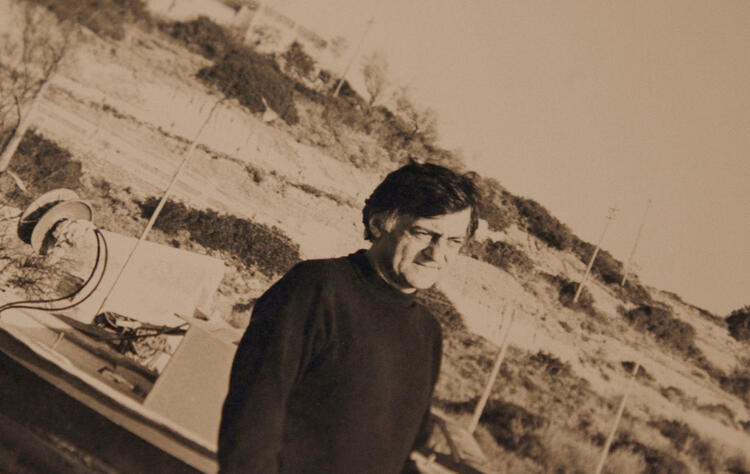
In conjunction with the exhibition dedicated to Aldo Rossi, the seventh edition of the Lake Como Design Festival hosted a special screening of the documentary film Aldo Rossi Design, directed by Francesca Molteni & Mattia Colombo, and produced by Muse Factory of Projects in collaboration with the Aldo Rossi Foundation. Rare archival materials and videos, previously unseen testimonies, images, and family albums, together with the writings of the great architect, form the first video narrative devoted to this subject. The film is further enriched by valuable contributions from Morris Adjmi, Alberto Alessi, Ludovica Barassi, Alberto Ferlenga, Antonia Jannone, Daniel Libeskind, Bruno Longoni, Giorgio Pogliani, Paolo Portoghesi, Fausto Rossi, and Chiara Spangaro.
Ico Parisi Design Archive
On the occasion of this edition, the Ico Parisi Design Archive inaugurated its new headquarters at Via Diaz 11 in Como, presenting an exhibition of several paintings created by Ico Parisi between the late 1970s and early 1980s. These large-format works are part of the series Crolli edificanti – Tavole di provocazione (Edifying Collapses – Tables of Provocation), never before exhibited in Como. The paintings are composed by assembling multiple painted panels, evoking a disorienting sense of fragmented imagery. They are part of Parisi’s broader artistic research, in which everyday objects — televisions, appliances, cars, and more — become, for Parisi, paradoxical ‘signals’ of the disintegration of domestic life.
The spaces on Via Diaz, originally designed by architect Marco Balzarotti and renovated with full respect for the 1999 original design, will finally allow public access — for study, research, and direct consultation — to the rich archival, photographic, and documentary materials, partly acquired through inheritance and partly collected over the years. The new headquarters also enables visitors to enjoy the artworks, design pieces, and architectural works on display, as well as an extensive library. For the first time, the new venue allows direct consultation of these materials alongside the viewing of works exhibited according to a program conceived by Roberta Lietti, curator and head of the Archive.
Lobby Nomade
In the former church of Santa Caterina on Via Borgovico, Nomade and Ultrapresent Studio recreated their personal vision of the lobby — a space commonly found in hotels of all levels, and, by definition, a room open and accessible to everyone. Designed as a space adorned with design and art, Lobby Nomade was conceived as a place of pleasant interaction between heterogeneous figures: glances, people, handshakes, and minds meet and move among the material artworks of Paolo Gonzato and Cosma Frascina, alongside design pieces that offer opportunities for observation, listening, and storytelling. The designers featured in the exhibition include TIP Studio, Studio X, Cristina Celestino for Saba, 967arch for Saba, 967arch for Coro, Daniele Daminelli for Malcusa, and Ultrapresent Studio. It is a place where stories are told and discovered, where connections are both planned and sparked.
Alvaro Molteni. Sketches
The exhibition Alvaro Molteni. Sketches, held in Giardino Bellini in Como, presented around 50 small- and very small-format works that the artist referred to as “sketches”. These are, in fact, studies executed using a variety of techniques and supports, depending on what Molteni had at hand at the moment of inspiration: paper, fragments of wood, or hardboard. Most of the works are preparatory studies for pieces that were later developed on a larger scale, spanning a period from the 1940s to 2000. Supervised by critic Luigi Cavadini, the exhibition also revealed Molteni’s working method, firmly rooted first in drawing, then in small-scale sketches, and culminating in the finished work.
The Disappeared Como. Five Urban Core Samples in Lost Como
The exhibition The Disappeared Como presented five urban “core samples” of lost Como — five emblematic cases of the rewriting of the historical palimpsest in the areas of Piazza Duomo, Piazza Cavour, Cortesella-Piazza Perretta, Teatro Sociale-Piazza Verdi, and the Stadium-Lakefront Gardens. The exhibition design included the creation of short display segments placed among existing ruins, featuring a selection of historical images of each site curated in collaboration with Fabio Cani, along with reconstructions of the historical thresholds that marked their evolution. The route unfolded within the Roman Baths of Como, establishing an ideal visual and symbolic resonance between narrative and context.
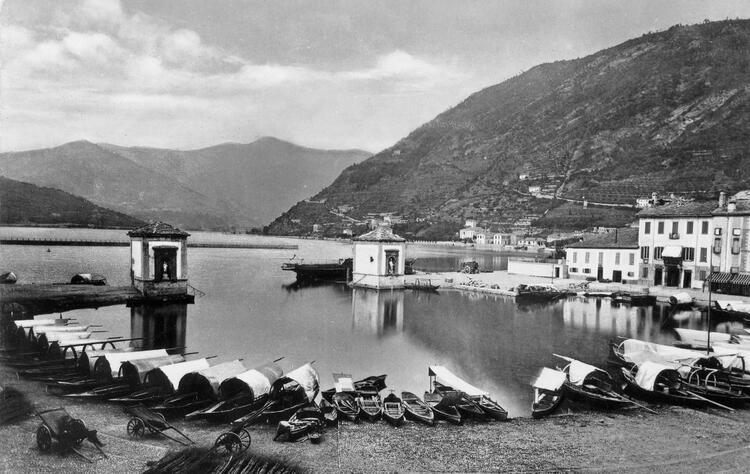
Fragments of History. Solo Exhibition by Virginia Guiotto
Fragments of History is a photographic narrative by Virginia Guiotto, curated by Massimiliano Mondelli and Paolo Vanoli, presented inside an ancient, forgotten icehouse — itself a fragment of a lost time. The exhibition captures an ongoing movement, frozen in fragments, that continually prompts reflection on the meaning of our earthly passage. In this context, the fragment is understood not only as a testimony of what once was but also as a symbol of change, transformation, and renewal. Like — and even more than — many European cities, Como is the result of overlapping layers of life that have continuously deepened and evolved over the centuries: works of art and shards of history that, though displaced and altered, were not lost, but have found new meaning and, in some cases, imposed it on their new locations.
Piccoli Razionalisti at Asilo Sant’Elia. Opening to the Public of Giuseppe Terragni’s Rationalist Masterpiece
As part of the visits to Rationalist buildings in Como, the Lake Como Design Festival opened the Asilo Sant’Elia (1935–1937) by Giuseppe Terragni to the public — a Rationalist masterpiece designed for the educational and psychological well-being of children. The venue hosted a video installation for the Piccoli Razionalisti (Little Rationalists) project, conceived by Wonderlake Como in collaboration with the Academy of Young Artists. During the 2024/25 school year, the project engaged over 1,400 primary school students from the city and province of Como in a journey to explore Como’s Rationalist architecture.
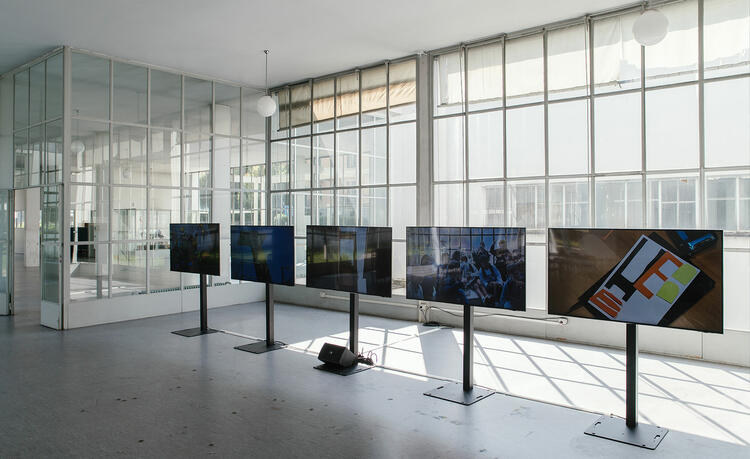
The project culminated with its presentation at the Asilo Sant’Elia during the seventh edition of the Lake Como Design Festival and announced its expansion through the Città Razionalista (Rationalist City) initiative. This new phase will extend participation to different age groups — primary schools, high schools, and the general public — and will include new local architectural sites. The initiative aims to allow 2,500 citizens of Como and the surrounding area, starting from six years old, to discover the emblematic sites of Larian Rationalism through age-appropriate and educationally tailored itineraries.
Studio Visit
Design studios, galleries, and artists' ateliers in the city of Como and around its lake take center stage during the festival days in a journey dedicated to art, architecture, and design. Exhibitions, site-specific installations, and specially created content enriched the program of the seventh edition. Here are the key participants of this seventh edition: Dalmoto & Chiara Berta , Memesi, Studio Terragni Architetti, Fabrizio Musa, Materia 2.0, Atelier Draga&Aurel, Harry Miesbauer Yacht Design, Archivio Collina, Studio Galli Cavalcabò, Brambilla Orsoni Architetti Associati, Tipografia Como - Workshop Make Your Abstract Real, Mimmo Totaro, Ceresa Grandis Architetti, SPAZIO 4, Archivio Cattaneo, Trippini Stampe Antiche.
–
Lake Como Design Festival / VII edition
14 - 21 September 2025
Fragments
a project by
Wonderlake Como ets
in collaboration with
Associazione Villa del Grumello / Fondazione Antonio Ratti / Muse Factory of Projects
with the contribution of
Regione Lombardia
under the patronage of
Comune di Como / Camera di Commercio Como-Lecco
sponsors
Chiarella / Mantero
guided tour partner
Materia 2.0
media partners
AD / ARK JOURNAL / ARTEMEST / C41 / COOL HUNTING / DE ZEEN / FALSTAFF LIVING / FUORISALONE.IT / ICON / IDEAT / LAMPOON / LIVING CORRIERE DELLA SERA / SALON / STIR / YATZER
hospitality partners
Bottega Comacini / Da Giacomo al Lago / Hilton Lake Como / Hotel Barchetta Excelsior / Palazzo Albricci Peregrini / Plinius / Passalacqua / Kitchen / Raimondi / Rent All Como / Terminus / Villa Flori
technical partners
Cappellini / Como Classic Boats / Davide Groppi / Fioroni / Gruppo Colombo / Kappa / L'Auto / Level / Living Divani / Macro Milano / Nephos Swiss Fog / One to One / Rossetti / Seletti / Vague
